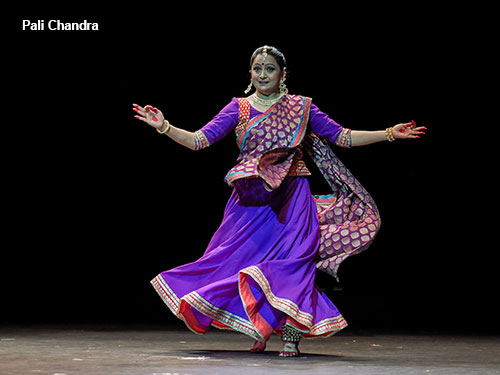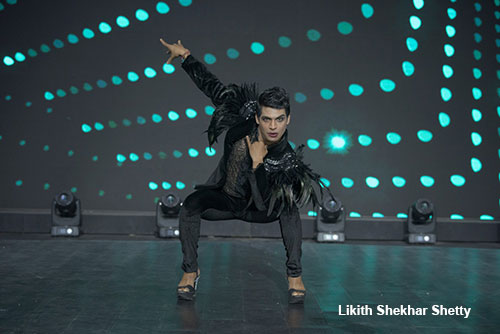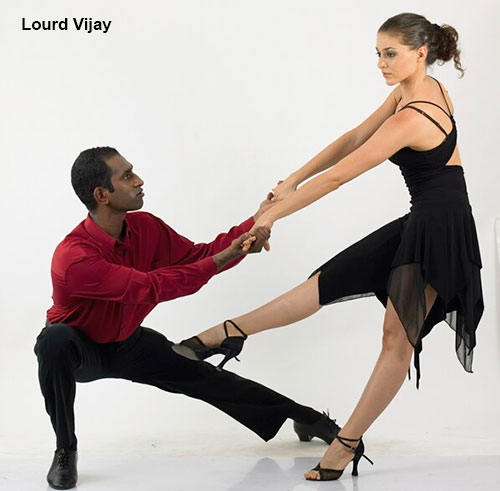Put on your dancing shoes: International Dance Day
Dance is one of the most popular creative art forms that has evolved over the centuries. The several classical and folk dance forms around the world propagate an expression of love, mythology, history, culture and discipline. Overlooking the barriers of ethnicity, dancers from across the globe celebrate the International Dance Day on April 29 with lots of dance and happiness. Passion leads a person to dance and express oneself creatively. It has also become one of the best ways to stay fit in the modern world.
Dance as an art form dates back to over 9,000 years and according to archeological evidence, 9,000-year-old dance paintings have been found at the Rock Shelters of Bhimbetka in India. Several sculptures found at Indus Valley Civilization archaeological sites, now distributed between Pakistan and India, depict dance figures. The Egyptian tomb paintings depicting dancing figures, date back to 3300 BC.
India boasts several classical dance forms such as Bharatnatyam (dating back to 1000 BC), Kathak (evolved during the Bhakti movement dating back to the 15th and 17th century CE) that originated in different parts of the country. These classical and folk dance forms emerged from different Indian traditions, epics and mythology. Today, several international dance forms such as Salsa (Cuba); Kabuki (Japan); Tango (Argentina); Belly Dance (Middle East); Break Dance (United States); Flamenco (Spain); Ballet (Russia) are very popular in India and other countries too.
In order to celebrate the richness of this art form from across the countries and cultures, in 1982, the Dance Committee of International Theatre Institute (ITI) – the main partner for the performing arts of UNESCO – decided to celebrate the birthday of Jean-Georges Noverre (1727-1810), the creator of modern ballet, as International Dance Day. Hence this day celebrates dance, universality in this art form, and focuses on bringing people together through dance.
 Many of the classical forms of Indian dance have attained global repute today and have also evolved with the time. The incorporation of modern forms of dance like contemporary in classical dances have broadened the horizons of dance and taken them to a larger audience. “Kathak has been an evolving dance form since its inception. It tells the stories of what is happening in the community. Not much has changed in essence from thereon. What has however impacted kathak is the usage of media to propagate it. When I was young, we had limited TV channels with Doordarshan as the main source of propagation; newspapers and radio stations but the sharing of craft was at a much slower pace. Now the sky is the limit. With Internet and especially social media, people can learn it faster. People have choices and the advantage to use that information is at their discretion. India is so full of miracles and dance was always a part of it. Now people from around the world know so much more about the Indian dance forms, and ethnic origins don’t matter,” says Pali Chandra, an internationally acclaimed Kathak dancer, choreographer and artistic director of Gurukul, Dubai. She trained in classical Kathak under late Guru Vikram Singh, Pandit Ram Mohan Maharaj, and Smt. Kapila Raj of Lucknow Gharana.
Many of the classical forms of Indian dance have attained global repute today and have also evolved with the time. The incorporation of modern forms of dance like contemporary in classical dances have broadened the horizons of dance and taken them to a larger audience. “Kathak has been an evolving dance form since its inception. It tells the stories of what is happening in the community. Not much has changed in essence from thereon. What has however impacted kathak is the usage of media to propagate it. When I was young, we had limited TV channels with Doordarshan as the main source of propagation; newspapers and radio stations but the sharing of craft was at a much slower pace. Now the sky is the limit. With Internet and especially social media, people can learn it faster. People have choices and the advantage to use that information is at their discretion. India is so full of miracles and dance was always a part of it. Now people from around the world know so much more about the Indian dance forms, and ethnic origins don’t matter,” says Pali Chandra, an internationally acclaimed Kathak dancer, choreographer and artistic director of Gurukul, Dubai. She trained in classical Kathak under late Guru Vikram Singh, Pandit Ram Mohan Maharaj, and Smt. Kapila Raj of Lucknow Gharana.
To this day the stereotype remains about dance being learnt from a young age; nevertheless, age is not a factor to learn dance. “Learning any dance form will help a person become flexible, develop ease in following rhythmic patterns and also them helps them move briskly. We have more than 50 ladies in Gurukul Dubai above the age of 40 and up to 67 years actively dancing and following the syllabus. Being consistent is the key,” confides Chandra.
 While age is no barrier to learn any dance form, gender should also not be a barrier to choose a dance form that one wishes to pursue. Likith Shekar Shetty a belly dancer and actor who has performed in several international concerts and also stars in the famous Kannada reality show Taka Dhimita in Colors Kannada channel sets a great example of breaking gender stereotypes in dance. “I researched a lot about various forms of dance, but amongst all I got attracted to belly dance. I took it up and am successful today. Belly dancing is not an easy dance form and requires a lot of hip strength with a clear mind. At beginner level one learns the breath control and a few core techniques in choreography. A male belly dancer needs courage to stand in front of crores of people in the audience and entertain them. A guy doing belly dance is not a crime. Society preaches a lot of things but sometimes it you need to hold on to your own dignity and do or choose what you want to do. Several guys who are interested to learn belly dance refuse to learn it because of societal pressure. In India, there are very few male belly dancers unlike the west,” says Shetty.
While age is no barrier to learn any dance form, gender should also not be a barrier to choose a dance form that one wishes to pursue. Likith Shekar Shetty a belly dancer and actor who has performed in several international concerts and also stars in the famous Kannada reality show Taka Dhimita in Colors Kannada channel sets a great example of breaking gender stereotypes in dance. “I researched a lot about various forms of dance, but amongst all I got attracted to belly dance. I took it up and am successful today. Belly dancing is not an easy dance form and requires a lot of hip strength with a clear mind. At beginner level one learns the breath control and a few core techniques in choreography. A male belly dancer needs courage to stand in front of crores of people in the audience and entertain them. A guy doing belly dance is not a crime. Society preaches a lot of things but sometimes it you need to hold on to your own dignity and do or choose what you want to do. Several guys who are interested to learn belly dance refuse to learn it because of societal pressure. In India, there are very few male belly dancers unlike the west,” says Shetty.
 While many choose dance because it is their passion, one of the best advantages of dance is it can become a great fitness regime. Salsa exponent Lourd Vijay who holds a world record for the maximum number of swing dance flips and is also the founder and artistic director of the Lourd Vijay’s Dance studio says, “Salsa is usually propagated by the media as a most sensual form of dance. This is not altogether true. If a person is interested in learning Salsa, irrespective of his/her body type, it should not matter. Infact Salsa is one of the best dance forms and can also be a good workout session too. One can take up the Latin American dance forms not only to learn them but also to maintain a fitness regime. So if you like any dance form just go for it.”
While many choose dance because it is their passion, one of the best advantages of dance is it can become a great fitness regime. Salsa exponent Lourd Vijay who holds a world record for the maximum number of swing dance flips and is also the founder and artistic director of the Lourd Vijay’s Dance studio says, “Salsa is usually propagated by the media as a most sensual form of dance. This is not altogether true. If a person is interested in learning Salsa, irrespective of his/her body type, it should not matter. Infact Salsa is one of the best dance forms and can also be a good workout session too. One can take up the Latin American dance forms not only to learn them but also to maintain a fitness regime. So if you like any dance form just go for it.”
Odeal D’Souza
https://www.educationworld.in/new-delhi-to-host-first-of-its-kind-dance-theatre-on-hiv-in-india/















Add comment